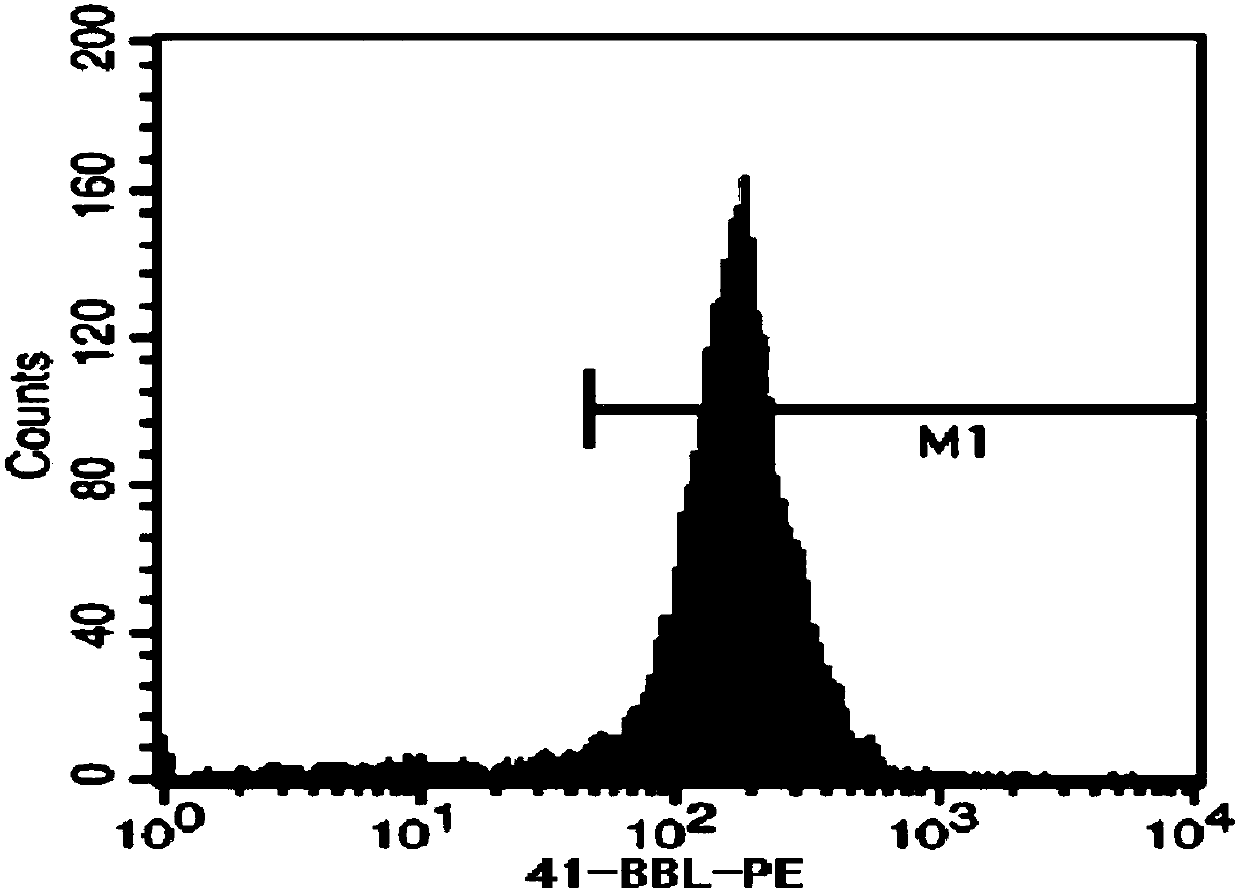Biological film for promoting gene editing T cell activation and amplification, preparation method and application
A gene editing and biofilm technology, which is applied in the fields of bioengineering and biomedicine, can solve the problems of not being able to change the function of T cells, avoid cleaning steps and contamination opportunities, solve expensive problems, and simplify the culture procedures and steps.
- Summary
- Abstract
- Description
- Claims
- Application Information
AI Technical Summary
Problems solved by technology
Method used
Image
Examples
Embodiment 1
[0025] Example 1: Preparation and purification of recombinant biofilm with rCD137L membrane protein
[0026] Step 1. Use the CRISPR-CAS9 gene editing method to insert the CD137L gene into the K562 cell genome at a fixed point. The specific steps are:
[0027] 1) Synthesize the full sequence of the CD137L gene with 6 His tag gene sequences, the sequence is shown in SEQ ID NO:1 below;
[0028] 2) Design, prepare and construct 3 gRNAs according to the target gene sequence.
[0029] 3) The constructed gRNA was constructed and transfected into K-562 cells, and the editing efficiency of gRNA in cells was detected.
[0030] 4) Compare and analyze the editing efficiency of the three gRNAs in cells, select the gRNA with the highest editing efficiency and design the corresponding ssDNA.
[0031] 5) Co-transfect the prepared gRNA and ssDNA with the highest editing efficiency into K-562 host cells.
[0032] 6) The transfected cells were identified by PCR amplification and Sanger sequen...
Embodiment 2
[0038] Example 2: Activation and proliferation of gene-edited T cells by recombinant biofilm with rCD137L protein
[0039] The recombinant biofilm with rCD137L membrane protein obtained in Example 1 was used to activate and expand gene-edited T cells.
[0040] Human peripheral blood mononuclear cells are now used as processed samples, and CRISPR-Cas9 technology is used to knock out the human PD-1 gene to construct PD-1 gene knockout T cells, and the gene-edited activated T cells are efficiently expanded and cultured in vitro. Specific steps are as follows:
[0041] Step 1: Isolation of peripheral blood mononuclear cells from blood
[0042] Directly extract 80-100ml of venous blood from the donor, and add anticoagulant-heparin;
[0043] Centrifuge the collected blood sample at 2000rpm for 10min at room temperature, and carefully absorb the upper plasma layer for later use; restore the blood sample to its original volume and mix well; slowly add the diluted blood to Ficoll, an...
PUM
 Login to View More
Login to View More Abstract
Description
Claims
Application Information
 Login to View More
Login to View More - R&D
- Intellectual Property
- Life Sciences
- Materials
- Tech Scout
- Unparalleled Data Quality
- Higher Quality Content
- 60% Fewer Hallucinations
Browse by: Latest US Patents, China's latest patents, Technical Efficacy Thesaurus, Application Domain, Technology Topic, Popular Technical Reports.
© 2025 PatSnap. All rights reserved.Legal|Privacy policy|Modern Slavery Act Transparency Statement|Sitemap|About US| Contact US: help@patsnap.com


